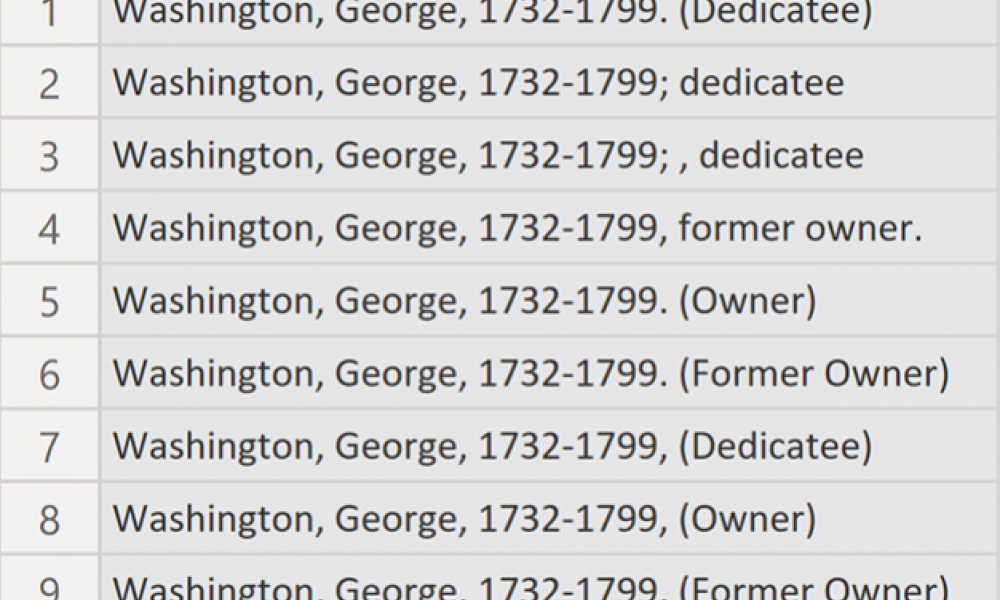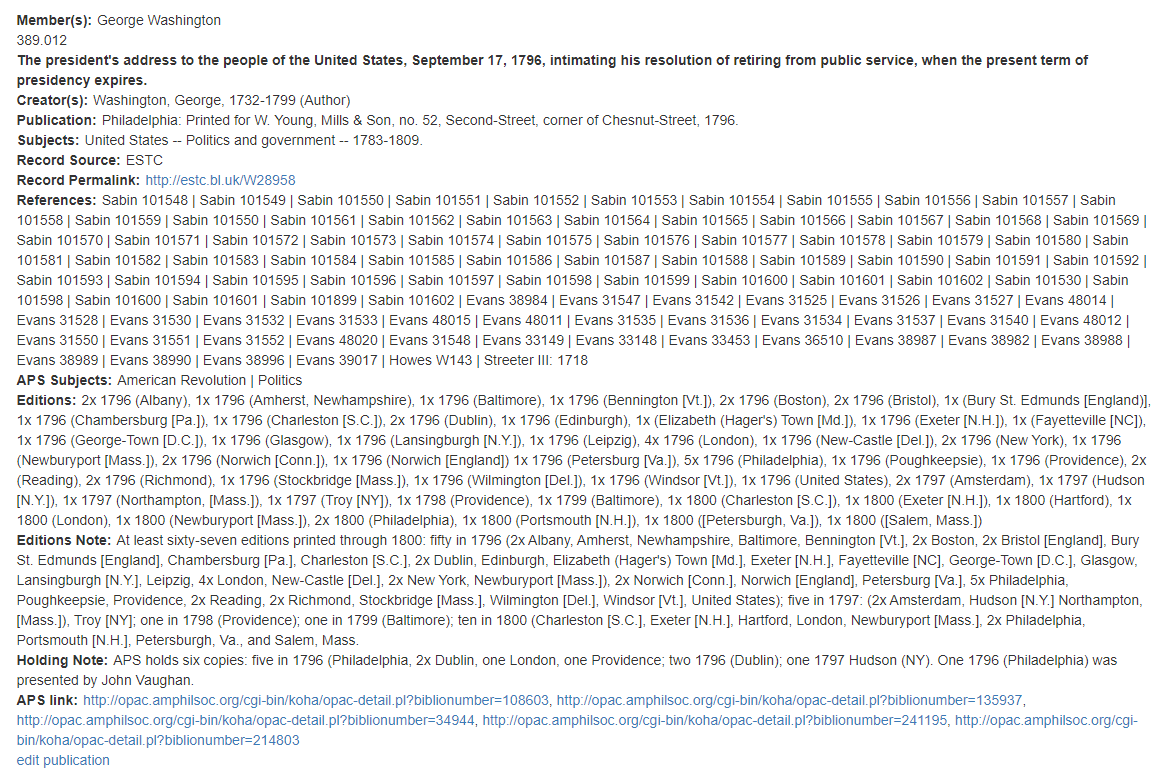Members Bibliography - Contextual Information

This bibliographic database will include the works of such figures as George Washington, John Adams, John Jay, James Madison, and Thomas Jefferson, as well as dozens of lesser-known though important scholars and thinkers in the early American republic. The database will, ultimately, document the development of early American science and intellectual life. For this resource, we push educators to ask themselves the following question before and after exploring the project: what objectives can you achieve by having students work with a bibliography?
We hope this resource will be of use in pushing bibliographies beyond a check-point assignment in your classrooms and provide inspiration for both you and your students. We’ve found that thinking about this bibliography in particular provides good notes on constructing bibliographies-as-assignments, new research tips and opportunities, and a variety of new perspectives.
This public-facing digital project is creating a database to document many of the most generative works and authors in the Atlantic world—including reprints and editions in any language—produced by Members elected to the American Philosophical Society (APS) between 1743 and 1865. This is no small task: APS Members were the who’s who of thinkers during the rise of natural philosophy and science, medical inquiry, and ethnography. Many of these early Members had deep connections to the American Revolution and the early republic.
Like any bibliography, this project started by gathering information about the publications needed or used. In this case, Fellow Jeff Appelhans (among other APS Fellows), drew together records from the public catalog of major historical libraries to see what our Member authors published. By drawing together records from the British Library’s English Short Title Catalog, the American Antiquarian Society, and the Library Company of Philadelphia, with APS holdings—and the vast foreign-language holdings cataloged in WorldCat—the project’s managers aspire to comprehensive coverage. The process and large scope taught a few lessons that can relate to smaller bibliographies.
Consider some of the big hits of the period covered in the project. For example, searching for famous Member Thomas Paine’s Common Sense, would result in a flood of results. Thus, the first considerations in a large (or small scale bibliography): scope of the project. As the early modern print revolution spun up, the boom of multiple editions alone could grind a project like this to a halt. When assigning large bibliographies or research projects, consider the scope of the project and the amount of available information. The time period covered should also go into consideration. Make sure learners know if they should be looking for editions within certain years or if any edition will do. The more narrow you as an educator can make the search, the easier for learners. Staying up to date on projects like this from classroom allies like the APS can help inspire research projects, trips, and other assignments.
When it comes to research for students and ourselves, Wikipedia is a common go-to starting location. This bibliography also contains many facets contained in a Wikipedia article: additional resources (the bibliography itself), small biographies, and a sense of historical connections. The biographies are vetted by staff at the APS, as content in Wikipedia is vetted, but these biographies are smaller and usually clock-in at around 250 words. The connections seen in this bibliography are slightly different as well. Instead of seeing paragraphs about the context of, let’s say George Washington’s Farewell Address, students will see the history of and media of publication and use of the Address. Additionally, the resources listed in this bibliography provide the same jumping points that a Wikipedia article might. Imagine what questions might be provoked!

Just as Wikipedia is a comfortable research go-to, manuscripts (hand-written materials) tend to be a comfortable primary source go-to. There is no doubting the power of a hand-written letter to connect students to history and historical figures on an intimate and empathetic scale. But there’s an equal and slightly different power that comes with published materials which can provide a new perspective on how we use primary sources. Let’s go back to George Washington’s Farewell Address. If you typically use a copy from 1800 as your primary source and compare that to this bibliography, the explorations of this document can change. Why were so many copies printed in 1800? What of the locations? Each of those copies is an individual primary source that shows a larger cultural network and narrative than a single manuscript might reveal. Taking a step back onto that larger scale, think about the bibliography’s display of locations and years. The Republic of Letters, the Enlightenment—both happened via the exchange of printed and manuscript materials together. This bibliography allows you to track that exchange in a networked, birds-eye view. Again, imagine what questions that might provoke!
A bibliography is not as flashy as a virtual exhibition. But, as our thinking about uses of the bibliography deepened, there was an excitement that built up around its possible applications and the spin-off thoughts. Think about the definition of “bibliography.” Compare and contrast the surprisingly broad definition to how you use bibliographies in the classroom. There’s a reason National History Day assigns them and scholars so heavily use them. There’s a comparison to be made to popular book lists like the New York Times’ “Best-seller List” and this bibliography. That comparison and novel (possibly more interesting and enriching) uses of bibliographies rely on a reframing of those objectives we asked you to think about in the beginning.
Resources like this take more creative work but are always worth exploring. There are questions, ideas, concepts, activities, that can be discovered if we push to think outside of the usual assignments. From how to construct a complex, comprehensive bibliography to exploring Enlightenment era exchange, we invite you to join the APS Library & Museum in rethinking the dusty bibliography!
Written by APS Fellow Dr. Jeff Appelhans and Mike Madeja, Head of Education Programs
